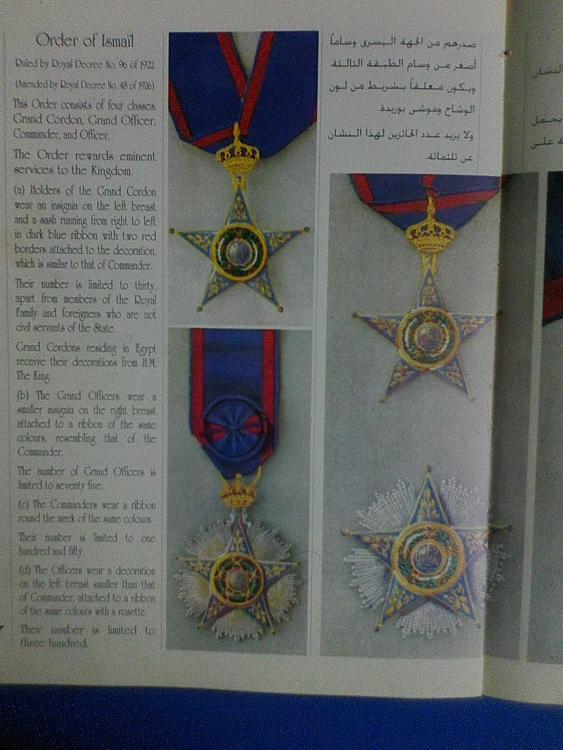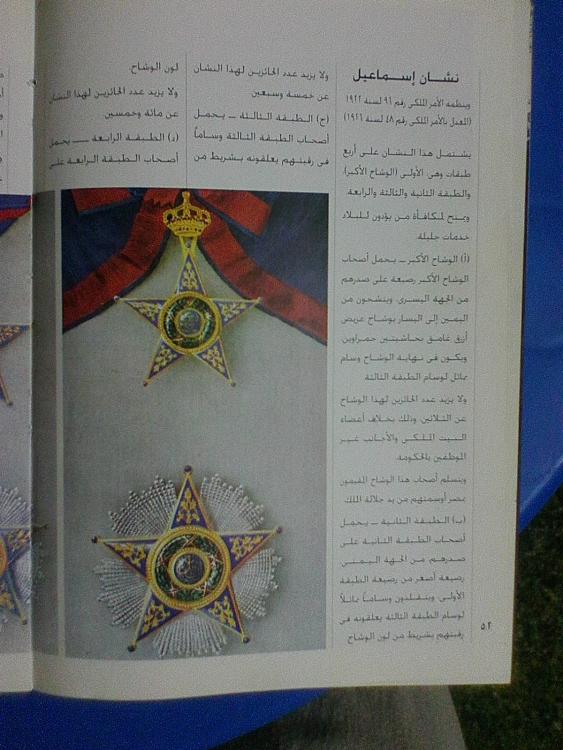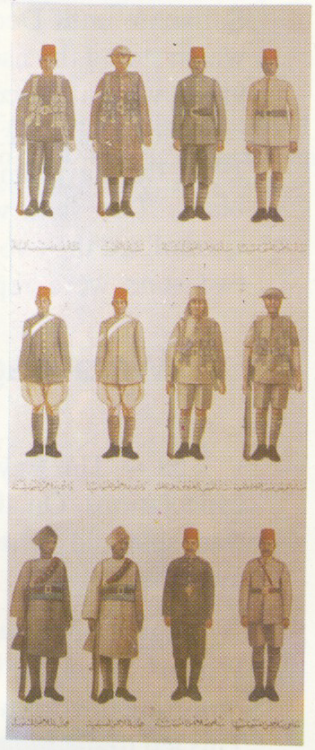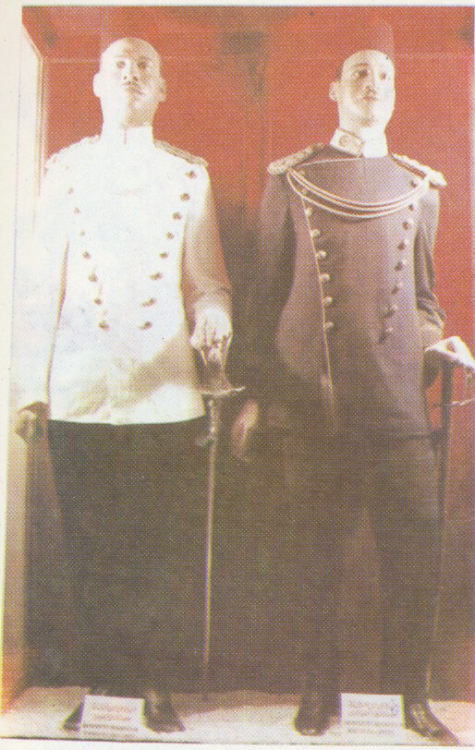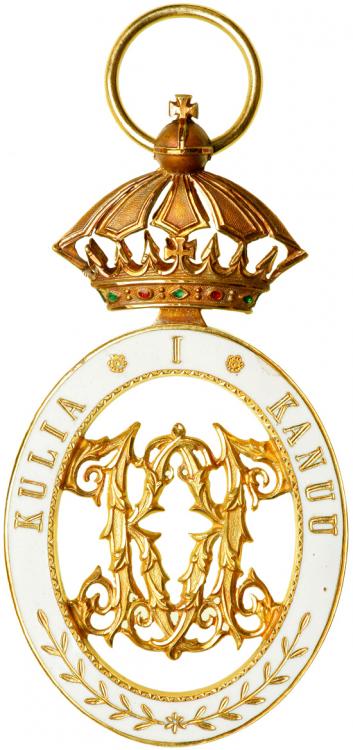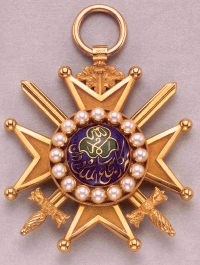-
Posts
54 -
Joined
-
Last visited
-
Days Won
1
Egyptian Zogist last won the day on November 6 2020
Egyptian Zogist had the most liked content!
Profile Information
-
Location
CA
Recent Profile Visitors
3,722 profile views
Egyptian Zogist's Achievements
-
I'm not sure if these stamps are actually issued by the Syrian government, or if they're just souvenirs. The Arabic text says "السورية" "The Syrian" instead of "سورية" "Syria". Using Google's reverse image search, I found the seller on eBay selling these, and a lot of the stamps he sells don't appear to be real. A lot of them appear to be pro-Syria "memes" from Twitter printed on perforated stamp sheets. One of the items he sells, a set of Haitian stamps featuring Chile's Pinochet is listed by the Haiti Philatelic Society as being falsely issued and reported by Haitian authorities to the UPU.
-
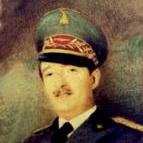
Miniatures of the Middle East & Arab World
Egyptian Zogist replied to oamotme's topic in Middle East & Arab States
Owain, What are the two medals in the bottom row with the Green-White and Green ribbons with King Farouk's portrait? I don't think I've seen them before. Beautiful collection by the way! -
I just remembered that I have an issue of a bilingual Arabic-English magazine for modern Egyptian history enthusiasts that discussed the orders, decorations, and medals of the monarchy era. Here is the section on the order of Ismail, I apologize for the quality of the photos. The source given for the information is the "Royal Protocols, Abdine Palace, 1952". I'm not sure if the illustrations are from the Royal Protocols book or if they were from the manufacturer (Maison Bichay in Cairo). Let me know if you'd like to see the other decorations in the magazine, I'll try to take better quality photos of the pages.
-
The central inscription simply says ISMAIL "اسماعيل" in a very stylized calligraphic script. The order was named after Khedive Ismail I, also known as Ismail the Magnificent who ruled Egypt from 1863 to 1879 and is created with building a large portion of "modern" Cairo, as well as other modernization projects. He once famously stated "My country is no longer in Africa, but has become a piece of Europe".
-

Egypt Khedivate Judge's Badge question
Egyptian Zogist replied to Rusty Greaves's topic in Middle East & Arab States
Hope this is relevant, and of interest to you: https://www.the-saleroom.com/en-us/auction-catalogues/brightwells/catalogue-id-srbr10077/lot-b19bfcb8-19b4-41fd-808e-a81900b1168c A khedivate era judge's badge, along with the Order of the British Empire, the Egyptian Order of the Nile and the Ottoman Order of the Medjidie. Here are the positions that the badge's owner occupied: "Alexander Cockburn McBarnet son of Lt.-Col. A.C. McBarnet 79th Highlanders, Born: 6th December 1867, educated at Fettes College, Edinburgh and Balliol College, Oxford. Barrister-at-Law, Inner Temple. Judge of First Instance Assiout, Egypt 1906; Judge Native Court of Appeal, Egypt 1913; Legal Member Permanent Arbitration Board, Egypt 1914; Lt-Col. (Temp and Local) Major-general Shear’s Southern Punitive Force, Egypt, 1919; Palins Special Commission to Palestine, 1920; President Permanent Arbitration Board, Egypt, 1920; Special Arbitrator between H.M. War Office and Egyptian State Railways, 1922.Died: Egypt 5th February 1934." -
I hope I haven't strayed too far from the topic of this post, but the monarchy era air force pilots' wings at one point featured a pair of palm fronds instead of regular wings, so while not ancient Egyptian per se, still a local take on a foreign design.
-

Egyptian Khedive commemorative medal question
Egyptian Zogist replied to Rusty Greaves's topic in Middle East & Arab States
I zoomed in on the original picture on Flickr, and the inscription appears to be the same as the title given for the medal on the Library of Alexandria's page, with the addition of four words I can't make out, though I think the second one might possibly be "بمناسبة" "On the Occasion of...". On the bottom is the date, from left to right "يوم الثلاثاء" "Tuesday (literally 'the third day' [of the week, as per Arab reckoning]) the numeral 12 or 13, I can't really tell, though more likely 13 (EDIT: According to a calendar I found online, Tuesday, Muharram 1328 was the 13th, so the inscription does in fact say 13) "محرم" "Muharram" (the first month of the year in the Islamic calendar, and the one following the month of "Dhu al-Hijjah" [last month of the previous year] during which the Hajj pilgrimage to Mecca takes place, which would fit in with the Khedive travelling there) The year 1328 AH (1910 AD), which means that Khedive would have participated in the Hajj pilgrimage 1327 AH (1909 AD). Beneath the numerals for the year is the 'shorthand' (I guess would be the most appropriate word) symbol for the word "سنة" "Year" . Hope that helps! -
The only modern Egyptian military insignia I can think of that use ancient Egyptian imagery (besides lotus flower wreaths), is the badge for the signal corps (featuring a winged "sun-disk"), the emblem of the staff college (a crowned Horus falcon), and the border guards (a "King Tut" mask). This is a piece of costume jewelry as Chris mentioned, I'd say.
-

Egyptian Khedive commemorative medal question
Egyptian Zogist replied to Rusty Greaves's topic in Middle East & Arab States
The text in Arabic to the left of each image just has information about the actual image. Here's what it says: Details Source: Library of Alexandria Topics: Government Badges [could also be translated a bit more accurately as 'state insignia' Key Words (General): Medal, Commemorative Medals, Commemorative Medal Hope that helps! Also the title of the image is "الاحتفال بعيد جلوس الخديوي و العودة من الأقطار الحجازية" "Celebration of the Anniversary of the Khedive's Enthronement and The Return from the Hejazi Territories", which would appear to be the event commemorated by the medal. -
The reverse says " عاشت كل يدٍ تبني حجراً في صرح الوطن", "Long live every hand that builds a stone in the edifice of the nation" which a quick Google search indicates appears to be a Nasserist motto. The flag is the pre-1958 one with a crescent and three stars, so hopefully that helps date the item.
-

Kingdom of Egypt (1922-1953)
Egyptian Zogist replied to Egyptian Zogist's topic in Middle East & Arab States
Here are some uniforms from a booklet entitled "The Military Museum and the History of the Egyptian Army", published by the Ministry of Defense in the 1980s I believe. The booklet captions this as "Soldier's uniforms in the reigns of both Kings Fouad and Farouk". The writing is too small to see, but I recognize some of these from other sources. The first two uniforms, second row, are cavalry (probably winter olive-green and summer khaki versions). I've seen them in newsreels of the period. The first two in the third row are border guards, who wore a distinctive "Sudanese"-style uniform. These two models are supposed to be from the era of King Fouad (1917 - 1936). I believe the placards on the bottom identify the one on the left as a lewa'a (لواء Major General) and the one of the right as a molazim awwal (ملازم أول First Lieutenant). These uniforms are captioned incorrectly as being from the reign of Mohamed Aly Pasha (1805 - 1848). They are from much later, in the late 19th century to early 20th century. I've seen photographs of officers wearing similar uniforms in the 1930s through 1950s, and if I'm not mistaken, they are the dress uniforms for officers of the Royal Guard Infantry (Royal Guard Cavalry uniforms were white in the summer, blue/red in winter, both with plastron fronts). These uniforms are in closed off sections of the Military Museum. I've tried to look as hard as I could through the glass doors last time I visited, and saw a few things I recognized but I couldn't read the labels. Hopefully the next time I go there they'll have opened up these rooms to visitors. -

Kingdom of Egypt (1922-1953)
Egyptian Zogist replied to Egyptian Zogist's topic in Middle East & Arab States
Owain, Did you find anything there that was militaria or vexillology related at all? I'd like to go the B.A. but those are pretty much the only topics I'd be interested in finding books or documents about. There is an entire room of orders, medals and decorations in the ِAbdeen Palace museum complex. If I get a chance to go I'll try to take pictures. There are also watercolors (I think that's what they are) of Egyptian military uniforms of the monarchy period. Picture of the orders and medals section, from http://www.cairo.gov.eg -
Hello everyone. I found this very beautiful item online. The Royal Household Order, from the former Kingdom of Hawaii. It was sold for $23,000 at Goldberg Auctioneers. *(I realize there was an older thread concerning the Kingdom of Hawaii, but I see that it was asking about medals specifically, not orders. I hope my creating a new thread is alright with the forum admins. Let me know if it's not!)*
-
Do you think it might be related to Afghanistan's Order of the Durrani Empire? It's the only other order I've seen whose design includes a cross with an Arabic (or to be precise a language using Arabic script) inscription. Images from Christopher Buyer's Royal Ark site (https://www.royalark.net/Afghanistan/orders.htm) :






